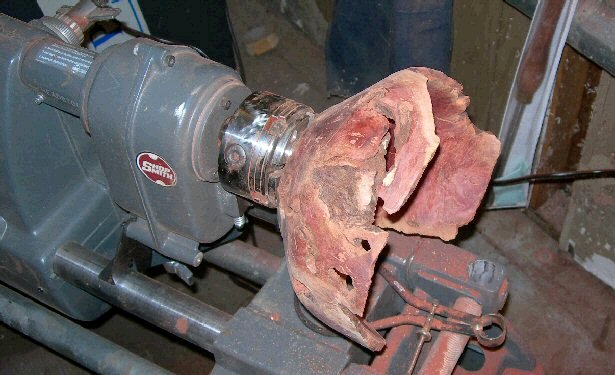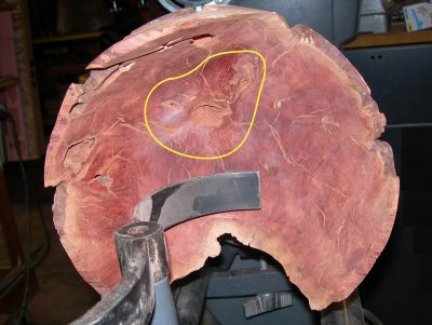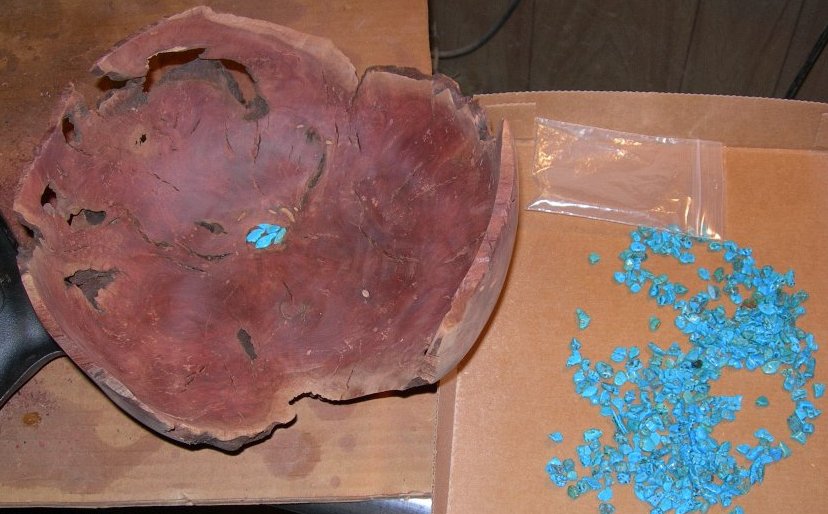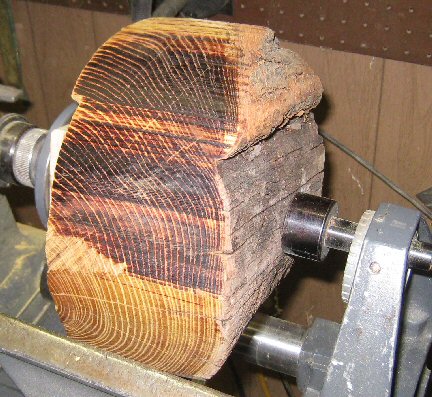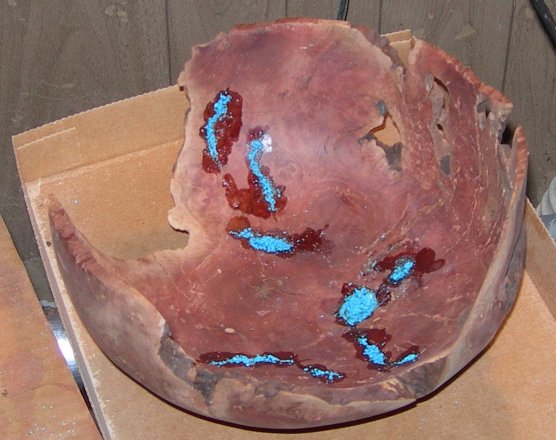
There were half a dozen or so spots that looked like reinforcement was necessary.
This will dry a day or two before continuing on.
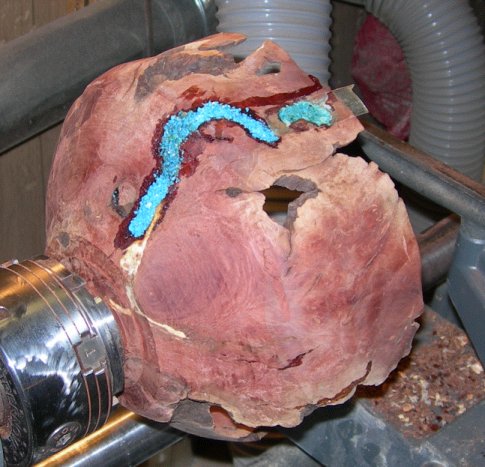
I didn't like the way the bowl bottom looked. It needed a bit more shape. I took about 1/4" off and ended up exposing
another large crack which destabilized about a third of the bowl, hence the additional inlay.
It's going to be real interesting to see how this turns out. It's either going to look very attractive or it's going to look like
some kind of clash of the primary colors freak show.
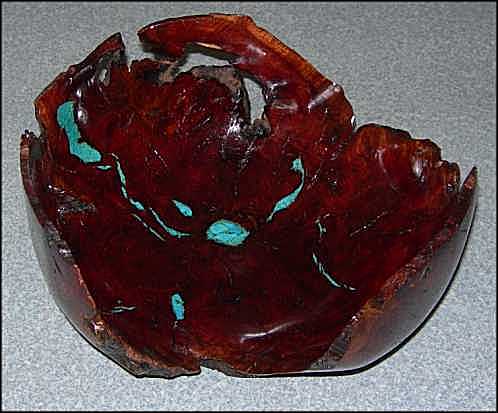
Well, here it is. It actually looks pretty good. It is finished with True Oil.
The pattern of the inlay follows the chunk of bowl that looked about to crack out.
The stuff is a pain to turn and sand, but the end product kind of makes it worth it.
Worth it to do another? Maybe.......
Merry Christmas, April!
